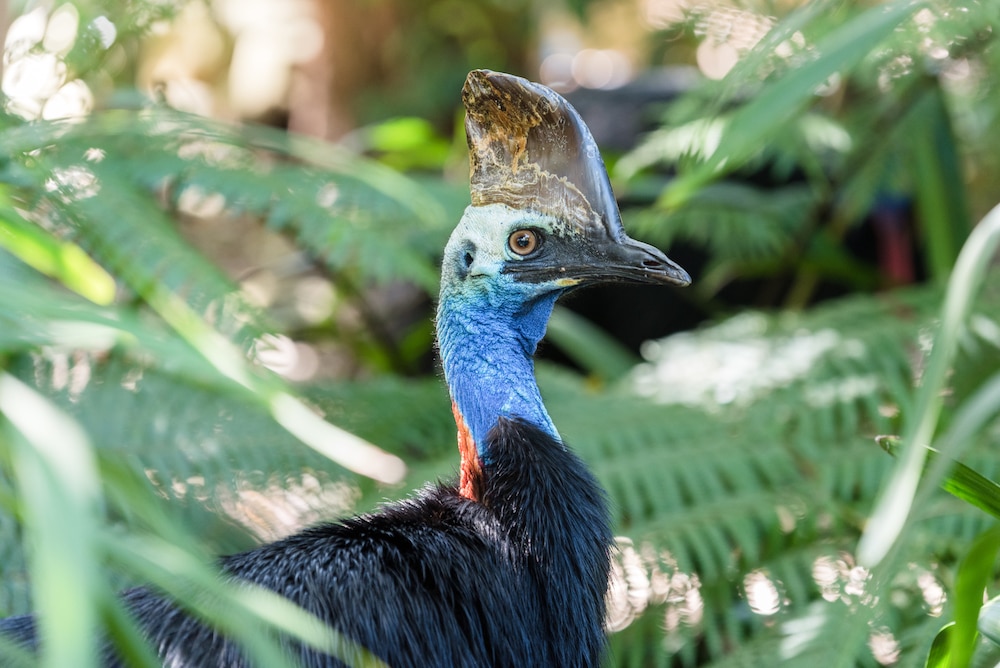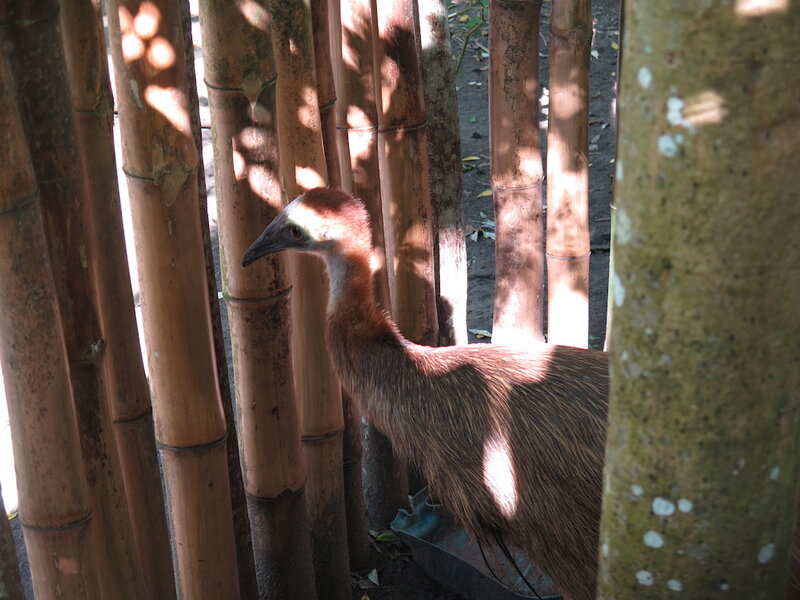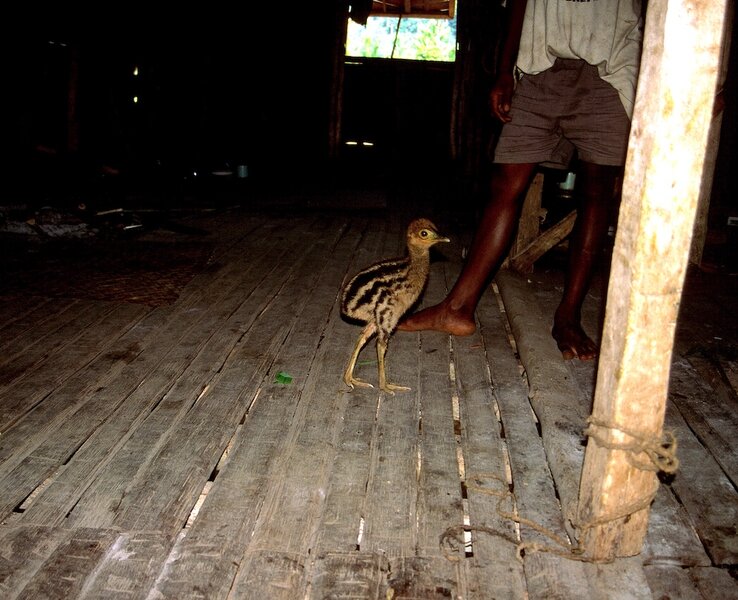Create a free profile to get unlimited access to exclusive videos, sweepstakes, and more!
Dinosaur pets! Ancient humans hatched and raised giant dino-birds
It's a living.

If ever there were a living remnant of long-extinct dinosaurs still living upon the Earth, it exists in the giant flightless birds. A cursory examination of emus and ostriches reveals whispers of the legacy of their ancient past. But even they pale in comparison to cassowaries — large, flightless birds endemic to parts of Indonesia, Australia, and New Guinea, who maintain bright colors and a penchant for aggression.
Many flightless bird species fell to extinction upon the arrival of humans into their habitats. The elephant birds from Madagascar were exceedingly large and would have peered over the heads of human hunters. The Moa from New Zealand went extinct quickly, within a couple hundred years of human settlements in the area.
Cassowaries escaped that fate, and new research suggests that may be due in part to species management by ancient human populations. Kristina Douglas from the Department of Anthropology and Institutes for Energy and the Environment at Pennsylvania State University, and colleagues, studied cassowary eggshell fragments for clues to the relationship between ancient humans and their bird neighbors. The results were published in the journal Proceedings of the National Academy of Sciences (PNAS).
“We have samples from two rock shelter sites,” Douglas told SYFY WIRE. “These sites are in valley systems with different climates, microclimates, different ecological systems... so presumably two different ancient communities.”
Researchers investigated those two sites in the montane rainforests, looking at cassowary bones and eggshells in order to gain insight into how ancient humans interacted with cassowaries, the largest vertebrate species in the region. They found few bones — which could be explained in part by the fossilization process which favors some types of bone over others — but many eggshells.
“We suggest that maybe people were less interested or less in the habit of hunting adult cassowaries and were more interested in harvesting eggs, when possible,” Douglas said.
That makes a certain amount of sense, hunting cassowaries is a dangerous endeavor, but the previous assumption was that any interaction humans had with cassowaries during the late-Pleistocene and early Holocene must have been through hunting; mainly because husbandry of avian species was believed to begin with chickens and geese, and much later in time.
“Breeding, domestication, and management are all on a big spectrum,” Douglas said. “The first evidence we have in the archaeological record for domestication in birds dates to 5 or 6 thousand years ago. If we’re comparing this to the first domestication, we’re looking at this being several thousands of years earlier. As early as the end of the Pleistocene.”
Full domestication involves selective breeding to acquire traits which might be beneficial for humans and this research does not suggest that was happening in cassowaries, but it does represent the earliest management of alien species on record.
The team examined the eggshell remnants for clues about when they might have been harvested from nests. Looking at microstructures in the shells — pitting at the tips — suggests the eggs were harvested in the late stages of development when fetal chicks were fully developed. This provides strong evidence of intention to hatch the chicks and raise them. Alternatively, the peoples of the time were consuming them but had a preference toward consuming fully formed chicks, similar to balut, which is considered a delicacy in many parts of the world today.
“Potentially they’re doing a little bit of both. It could be that the intention is to try to hatch chicks when possible and sometimes that fails. In those cases, maybe people consume the contents of the egg. But the pattern is clear that they’re harvesting eggs in the very late stages of development. So, they’re not making omelets out of whatever they’re harvesting,” Douglas said.
Harvesting eggs at this late stage of development may have given people the added benefit of lowering the danger. In cassowaries, the females lay the eggs but then abandon the nests. It’s the males, who are smaller in stature — cassowaries being sexually dimorphic — who guard the nests. And they do so without fail, around the clock, until the eggs hatch.
“The males sitting on the nests are probably putting themselves in kind of a vulnerable position because they have been observed to sit on the nests for the entire incubation window. So, they’re not really eating much during that period, which is over 50 days. One possibility is that by the time the eggs have reached that late stage of maturity the males are actually a little bit fatigued on the nest and maybe their easier targets at that point,” Douglas said.
If ancient peoples were raising cassowary chicks from eggs, it’s likely they were then butchering and eating them once they reached adulthood or using them for trade. The feathers and bones of cassowaries are still prized among contemporary populations in New Guinea.
“It’s still ongoing. People raise chicks that they encounter in the forests, but they also sometimes hatch eggs and raise chicks. When talking about communities that lived thousands of years ago, there’s not necessarily complete continuity with people who are alive today,” Douglas said. “We are seeing strong evidence to support that this was happening as early as 18,000 years ago.”
Despite their high levels of aggression as adults, cassowary chicks have been observed to imprint on humans after hatching. This doesn’t necessarily mean that humans and hatched cassowaries lived peaceful lives alongside one another. Even those chicks who do imprint on humans often become aggressive once they reach adulthood.
“We only have some anecdotal evidence that in rare cases cassowaries that are raised from chicks by people are relatively docile, but for the most part once they reach adulthood, they become more difficult to manage. There are stories of cassowaries who were raised from chicks being relatively docile and people forming more emotional attachments to them,” Douglas said.
There are still many open questions regarding to what degree ancient peoples managed the populations of cassowaries and other large, flightless birds, and how that impacted the larger environment in these regions. Douglas is interested in tackling those questions next in hopes of determining why the peoples of New Guinea were able to reach a sort of equilibrium with cassowaries while birds in other parts of the world went extinct, as well as how the loss or maintenance of those species impacted the larger ecosystem.
“On New Guinea there are fruiting trees whose seeds are primarily dispersed by cassowaries. It would be interesting to know whether management of cassowary populations has played a role in how tropical forests have responded to climate change over time,” Douglas said.
What’s clear is that humans and cassowaries in New Guinea have a deep history, one which reaches back thousands of years and continues through today. It’s not quite the Flintstones with their ambiguous dino-dogs, but it’s as close as we’re likely to get for a partnership between the animals who once ruled the world, and the ones who rule it now.




























